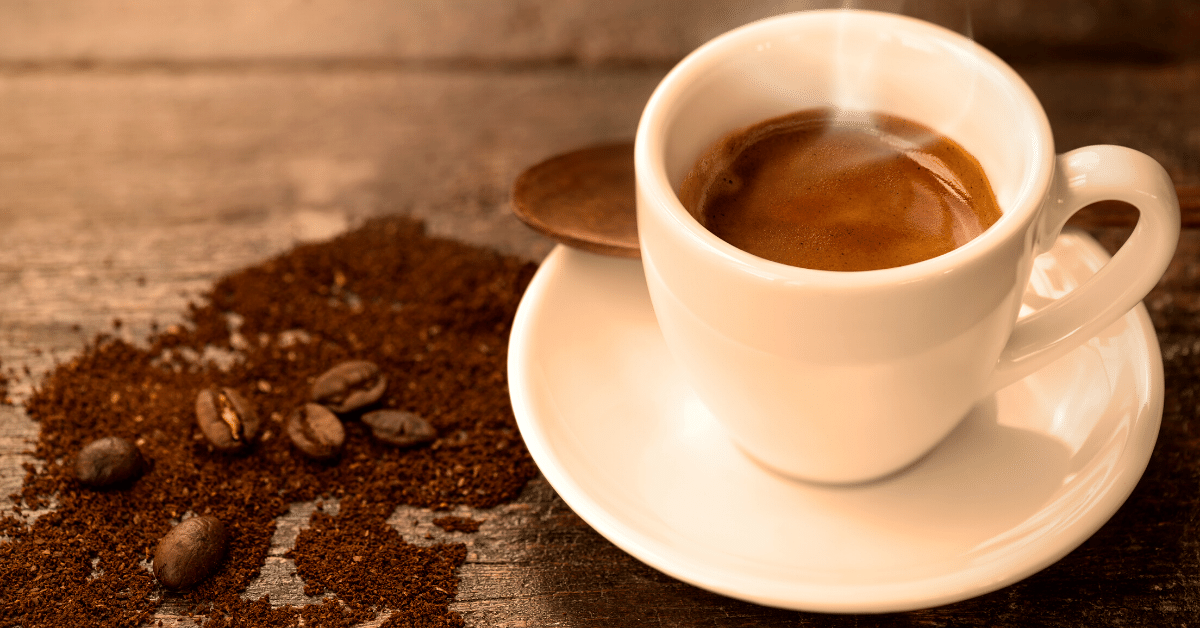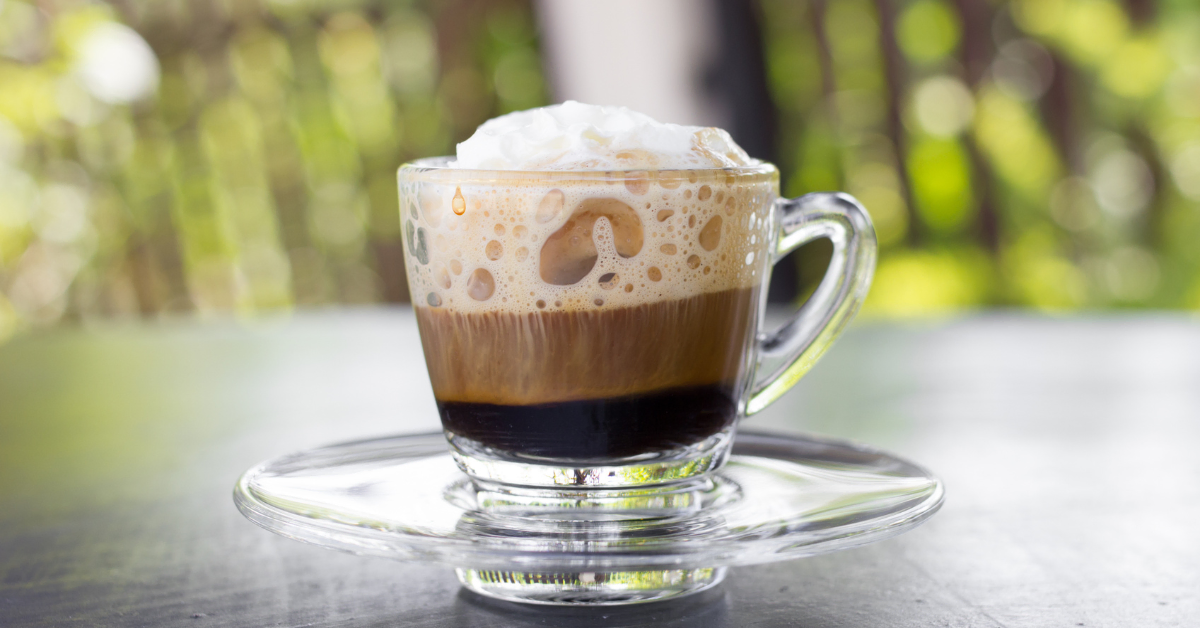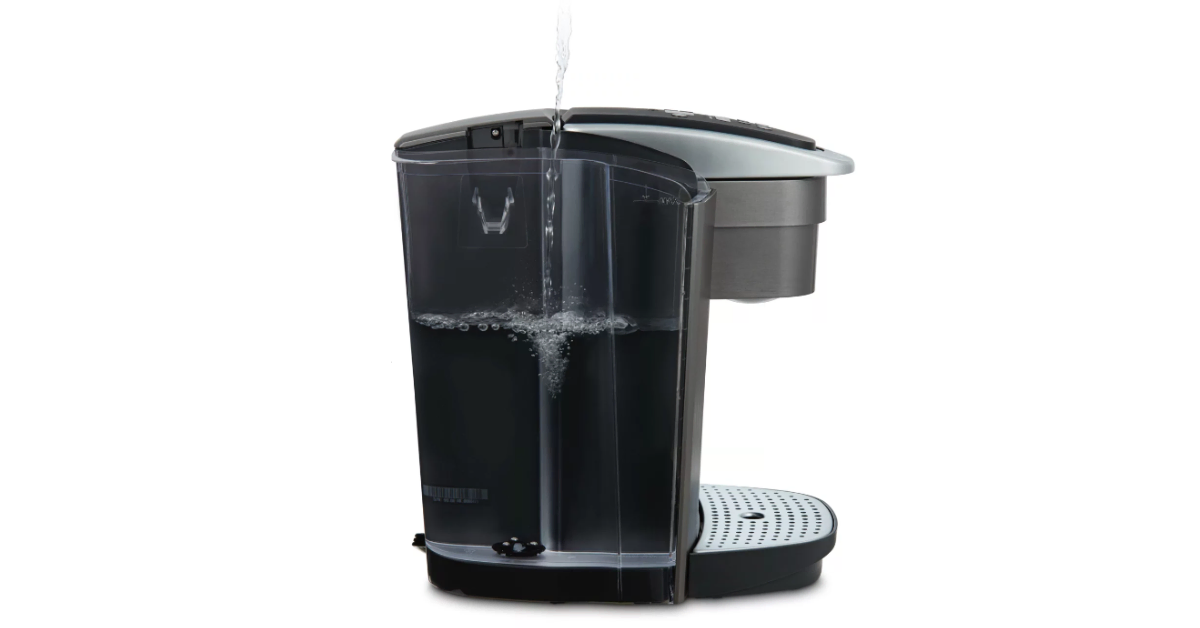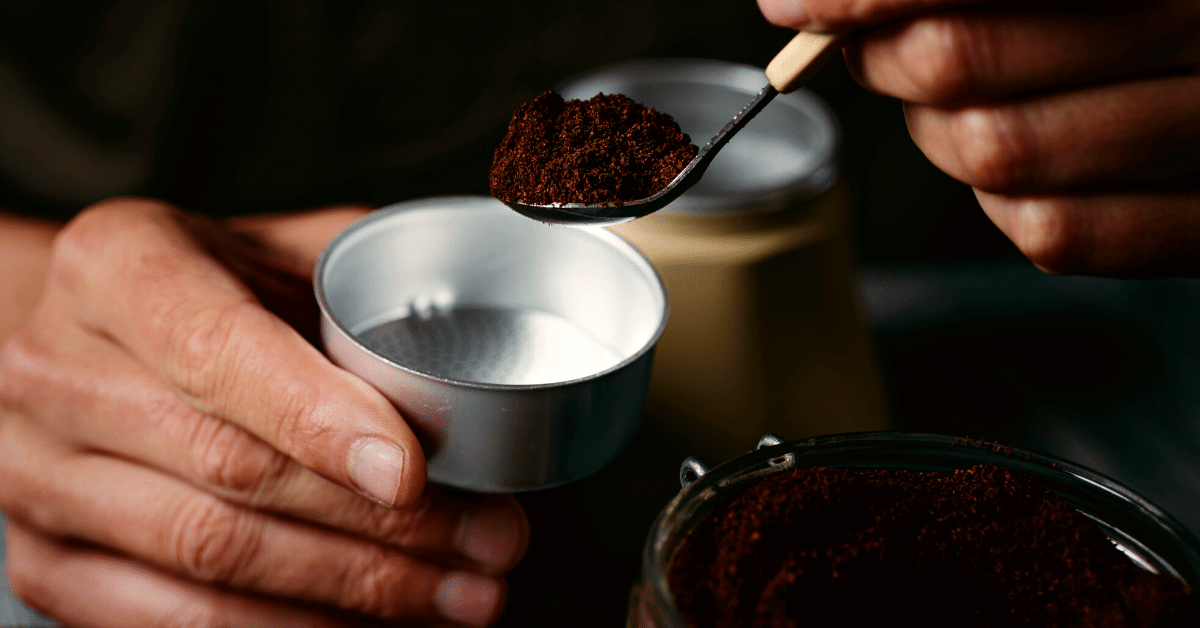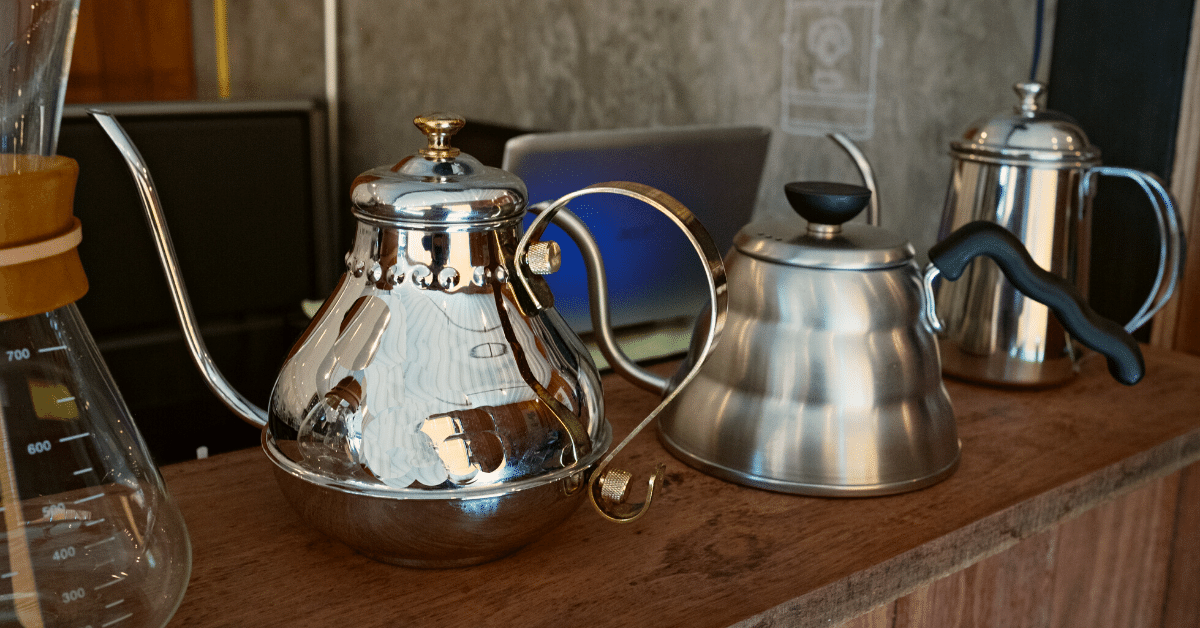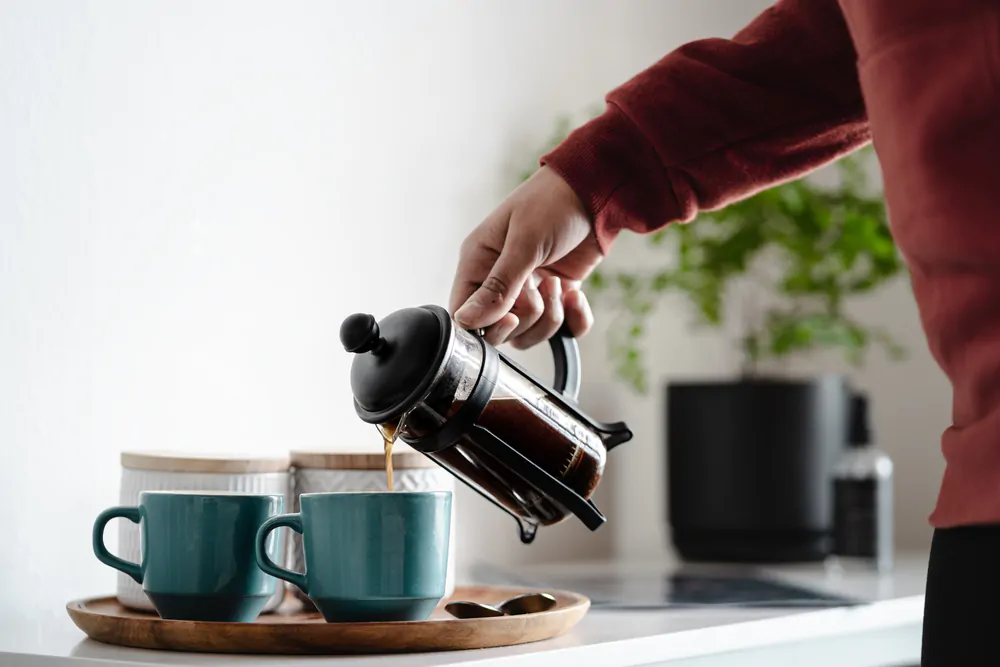Can you use regular coffee for espresso?
Technically, yes.
But with a few major caveats.
In this article, we’ll explore what espresso coffee actually is and when you might use regular coffee to make espresso.
Let’s jump straight in!
Can You Use Regular Coffee In An Espresso Machine?

The technical answer is that yes, you can use regular coffee for espresso.
But that doesn’t mean you should.
I’ll be the first to tell you that using the regular coffee bean for espresso can produce some of the best coffee you’ll ever taste.
Regular coffee has more unique tastes and profiles. That means you can get more interesting flavors out of regular coffee espresso.
For example, take a single-origin coffee and roast it super dark like you would for a traditional espresso. You will end up with a lot of the specific flavors from that country.
But roast it lighter and take care to dial in your espresso shot, and you’ll find some of the craziest and tastiest flavors you’ll ever experience.
I used to play around with all kinds of coffee and roasts as a barista. And through all my experience, lighter roasts always produced the most flavorful shots.
However, I’ll also be the first to tell you that you should likely leave shots like that to the pros.
Chances are you shouldn’t use regular coffee for espresso at home. (There are some exceptions I’ll cover a little later on.)
Home espresso machines don’t have the technology or the control you need to properly pull a delicious shot with regular coffee.
BOTTOM LINE
Regular coffee can taste amazing as espresso. But you probably shouldn’t use regular coffee for espresso at home. Home espresso machines usually don’t have the capability to pull delicious espresso with regular coffee.
Espresso Vs Regular Coffee
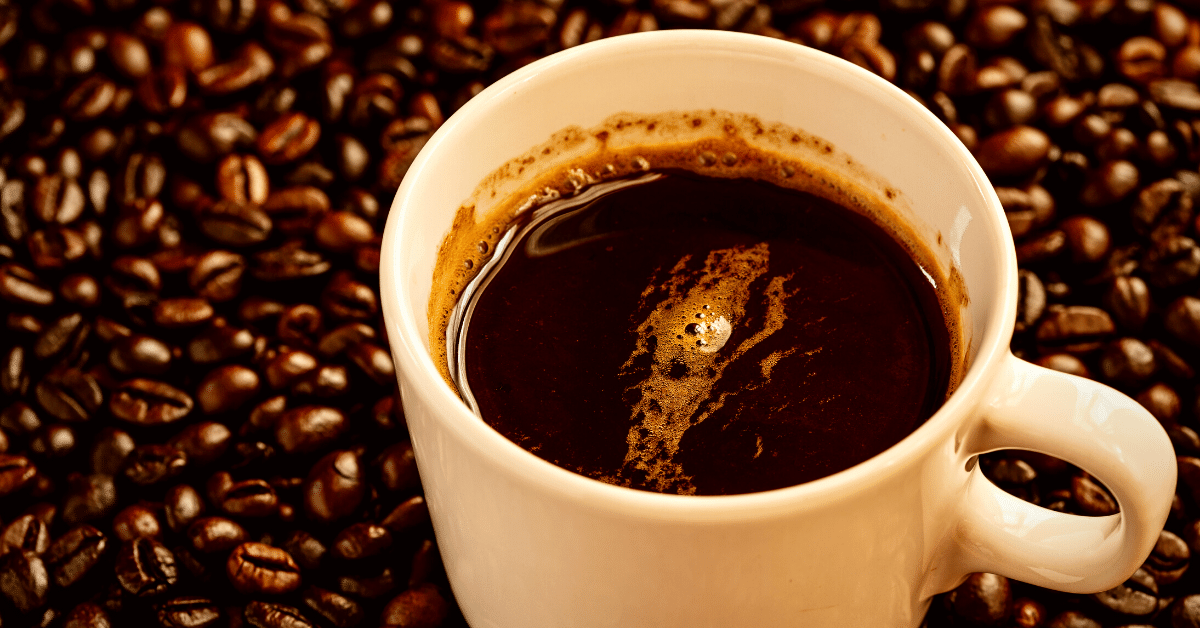
But what exactly do I mean when I say regular coffee beans instead of espresso?
“Espresso coffee” usually refers to a style of roast and blend. Traditionally, espresso coffee bean is roasted very darkly and was usually a blend of Arabica and Robusta beans.
These days, though, when you see “espresso” on a bag of coffee, that typically means a dark roast and very finely ground coffee.
“Regular coffee” refers to any coffee that isn’t labeled “espresso.”
But that’s a bit of a misnomer because any coffee can be used as espresso. And in recent years, the trend has been towards lighter roasts in espresso instead of more traditional dark roasts.
That’s why Starbucks introduced a Blonde Espresso and why many specialty coffee shops only pull espresso shots with light roasts.
IN A NUTSHELL
Espresso generally refers to coffee that is a dark roast and ground very fine. Regular coffee is any coffee that isn’t labeled as espresso. However, any coffee can be used as espresso, and you can brew espresso coffee any way you want.
When should you use regular coffee instead of espresso?
If you are a dedicated home brewer or trained barista with a real setup, then you can actually use any coffee at home.
The thing is, though, you’ll need a great espresso machine. You’ll need to be able to control the water temperature, grind size, time, and pressure.
Here’s what you’ll need:
- Manual Espresso Machine. Automatic machines don’t cut it. You need full control over every aspect of your espresso shot.
- Espresso Grinder. This is different from most other grinders. Espresso needs to be finely ground, much finer than most home grinders are capable of. You need a dedicated espresso coffee grinder.
- Knowledge. You need, at minimum, a basic understanding of how to pull an espresso shot. And you’ll need to understand how to dial in a coffee for espresso.
The grinder is maybe the most important part. If you want to use regular ground coffee to brew espresso, you’ll need to grind it very, very fine. That’s because anything coarser will result in a tart, sour, and unpleasant espresso.
BOTTOM LINE
You should only use the regular coffee ground to brew espresso if you have the equipment and know-how to control an espresso shot from grind to cup. Otherwise, I would highly recommend sticking with espresso coffees or dark roasts with a fine coffee grind.
The Best Coffee For Espresso

I can’t reasonably claim there is the best coffee for espresso.
I mean, coffee is all about personal taste. So what I consider the best coffee for espresso might be your least favorite.
However, I can lay out some guidelines on what you should look for in an espresso coffee. Guidelines that work regardless of using an espresso roast or regular coffee.
What type of beans is best for espresso?
There are literally hundreds of different types of coffee varieties out there. Like, I mean hundreds.
And yes, they all do have different tastes and characteristics. Think of it like types of grapes used for making wine. Each grape makes a specific type of wine.
But there are two overarching categories of grapes used to make wine: green and red grapes.
Coffee is actually very similar. There are two main types of coffee beans we can use to make coffee: Arabica and Robusta.
You might have noticed that a vast majority of coffee sold is Arabica.
That’s because the Arabica coffee bean is simply better than Robusta in terms of quality and flavor.
So, why might we use Robusta beans?
Three reasons:
- Heartier. Robusta beans are more resistant to diseases that affect coffee plants. And they are able to grow in non-ideal conditions.
- Caffeine. Robusta beans have more caffeine than Arabica beans. That’s why some coffee brands that want to make strong coffee use a blend of Arabica and Robusta.
- Price. Because Robusta beans grow easily and aren’t lost to disease, they are generally cheaper than Arabica beans.
Traditionally, Robusta beans were used as espresso beans in Italy and Spain. In fact, Robusta beans are still in high demand in countries like China and South Korea.
BOTTOM LINE
Arabica beans will be brighter and have more interesting flavors. Robusta beans will create a smoother and richer espresso, but with a flatter flavor profile.
How does grind size change your espresso?
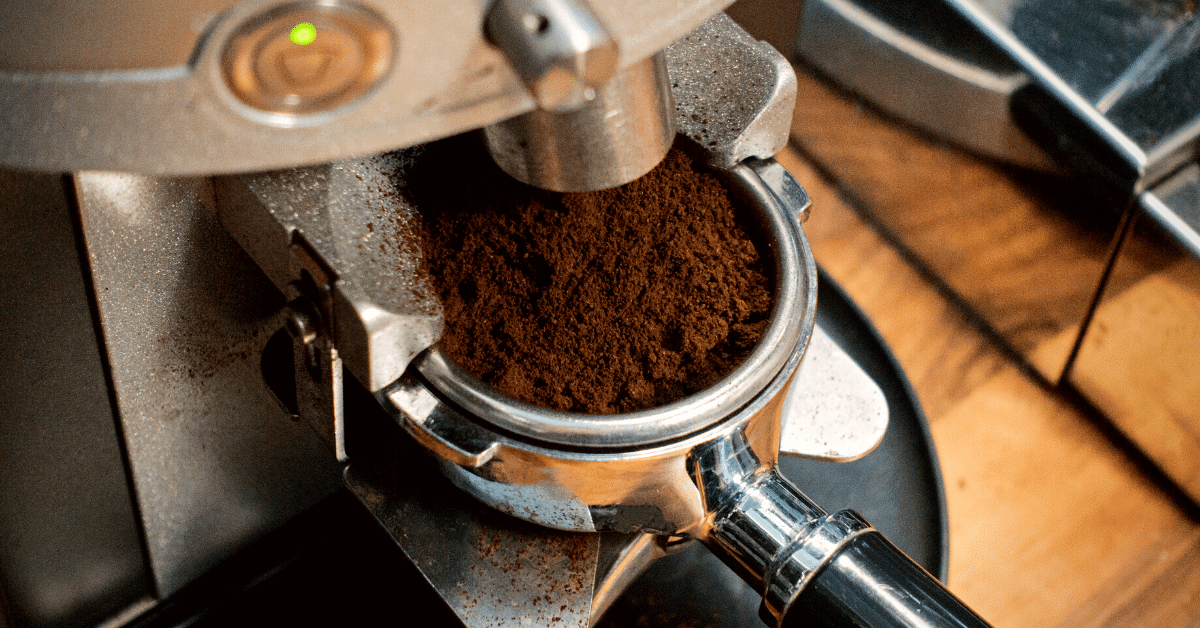
Regardless of which type of beans you choose, you’ll still need a quality grinder to make espresso.
And I don’t mean just your run-of-the-mill hand grinder, you’ll need a true espresso grinder.
The reason for that is that making espresso requires a really fine grind size. Much smaller than you would grind for French Press or drip coffee maker.
You need the grinds in espresso to act as a water deterrent. Anything too coarse and the water will rush through your coffee too quickly and taste terrible.
But grind too small, and the water won’t be able to get through at all, leaving you with a sludgy shot that tastes way too strong.
So you need to find a grind size that’s a good balance between letting water through and providing enough resistance to make a delicious coffee.
IN A NUTSHELL
You’ll need a dedicated espresso grinder to make great espresso. That’s regardless of which type of beans and whether or not you’re using an espresso roast.
What roast level should you look for?
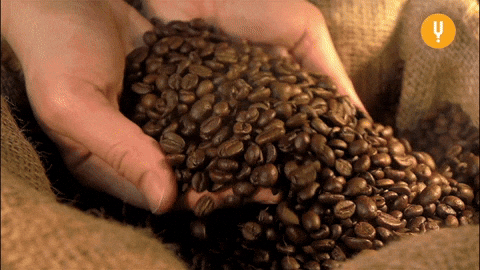
This is a bit tricky.
As I mentioned earlier, any coffee at any roast can be used for espresso.
But that doesn’t mean they should be.
Personally, I love a light roast espresso. It’s a very pure way to taste all the flavors in a single-origin coffee.
As a barista, I was always told that there’s nowhere to hide when you pull a shot of espresso. The coffee always speaks for itself.
That sentiment isn’t as true with a dark roast espresso bean.
That’s because dark roasts don’t have as many unique flavors as light roasts. That isn’t necessarily a bad thing.
I actually prefer darker roasts when I’m making milk-based drinks like lattes or cortados.
But if I’m drinking espresso straight, I prefer light coffee roast.
The choice, though, is always up to you.
I recommend trying many different roast levels for espresso to see what you enjoy.
BOTTOM LINE
Any roast level can be successful as espresso. Personally, I like darker roasts in my milk-based drinks and lighter roasts for drinking straight. But it’s always up to personal choice.
My Final Thoughts
The fact remains that any type of coffee can be used for espresso brewing.
And that “espresso coffee” generally just means a darker roast.
However, you should know what you’re doing if you want to use a lighter roast for making espresso at home.
Otherwise, I’d recommend leaving it to the pros.
But it’s all personal preference!
Want to find good espresso beans? Check out our choice of best beans that are bound to make a great espresso coffee.

